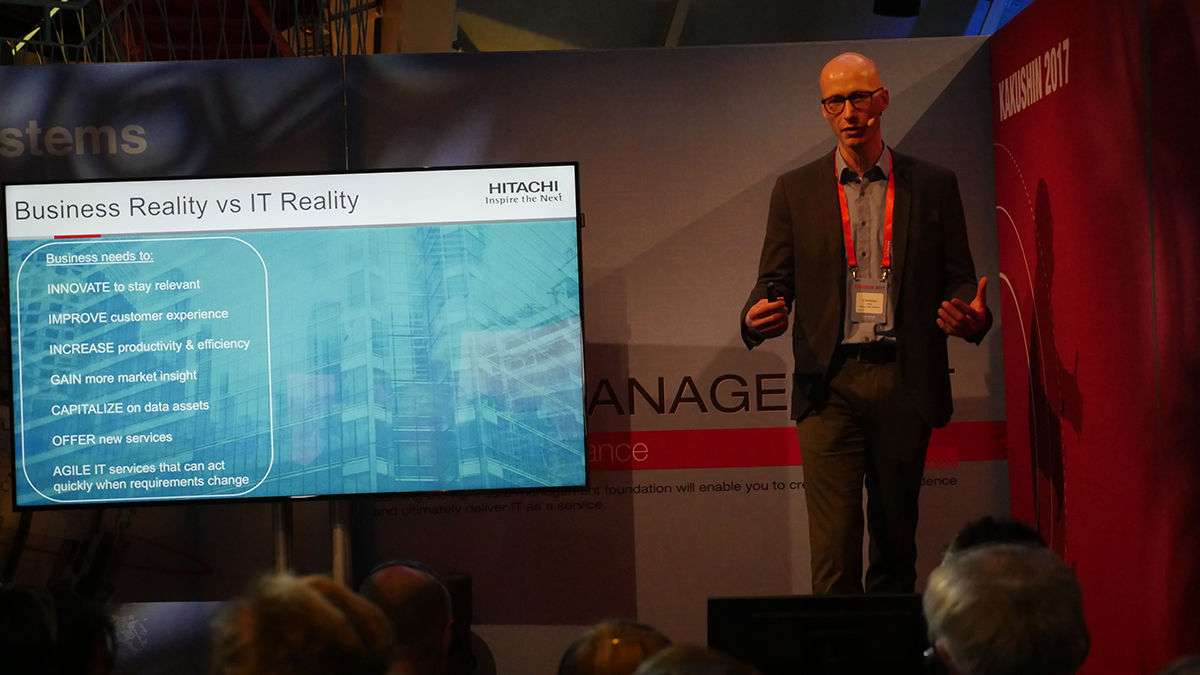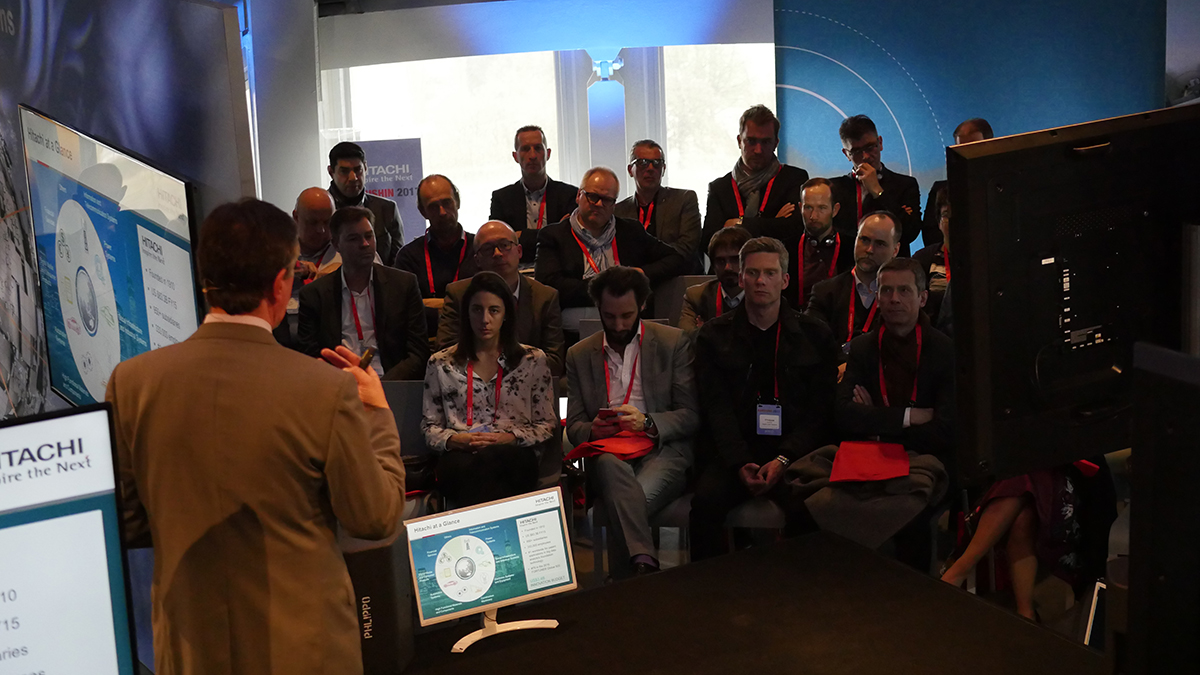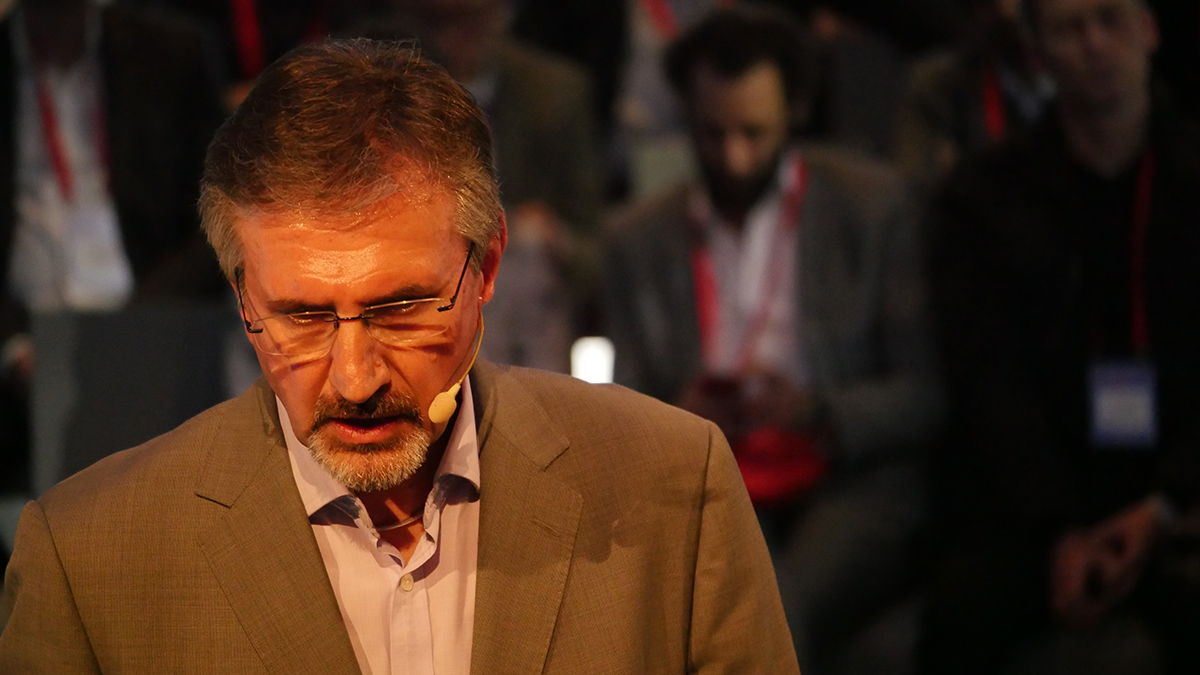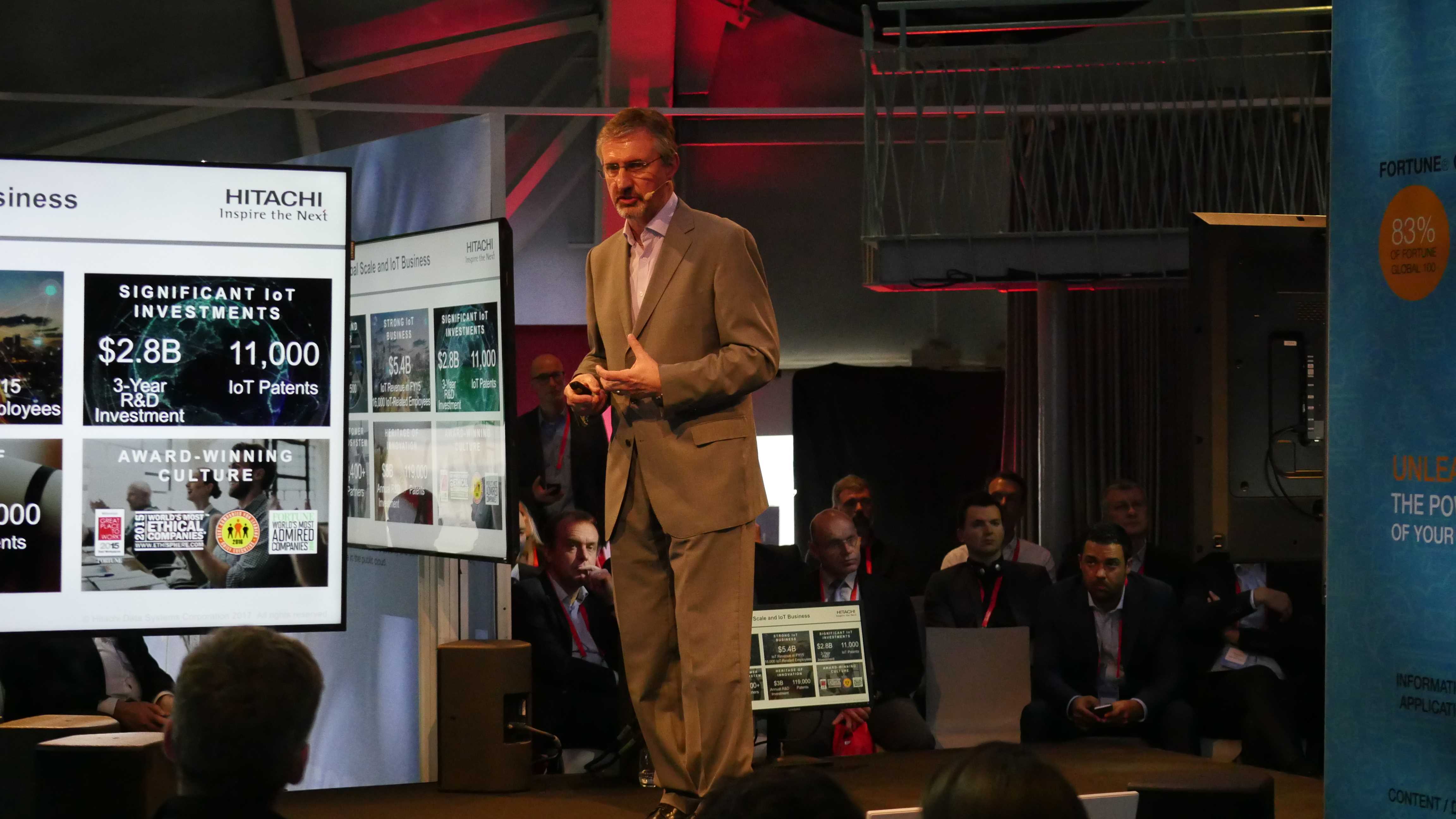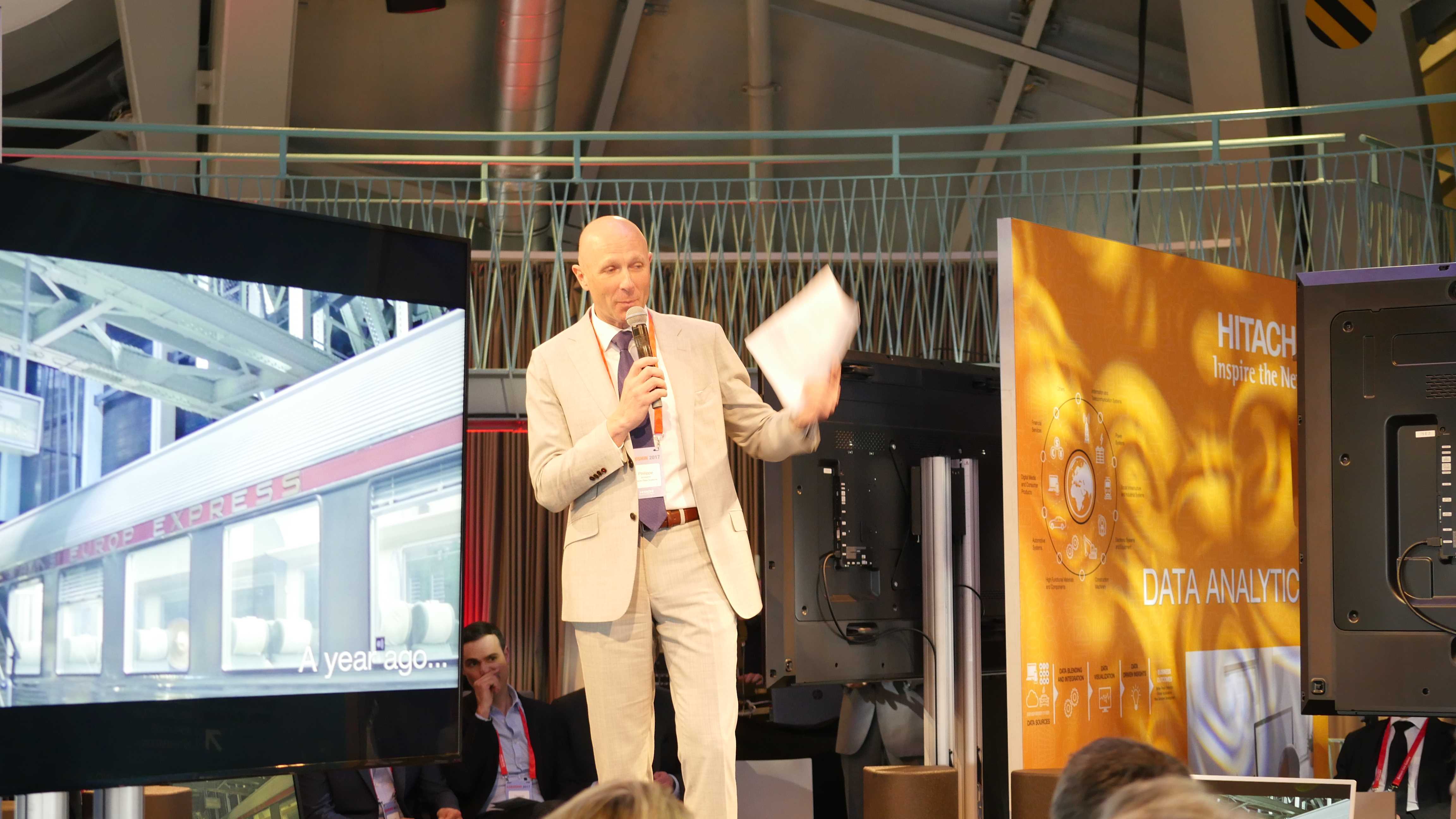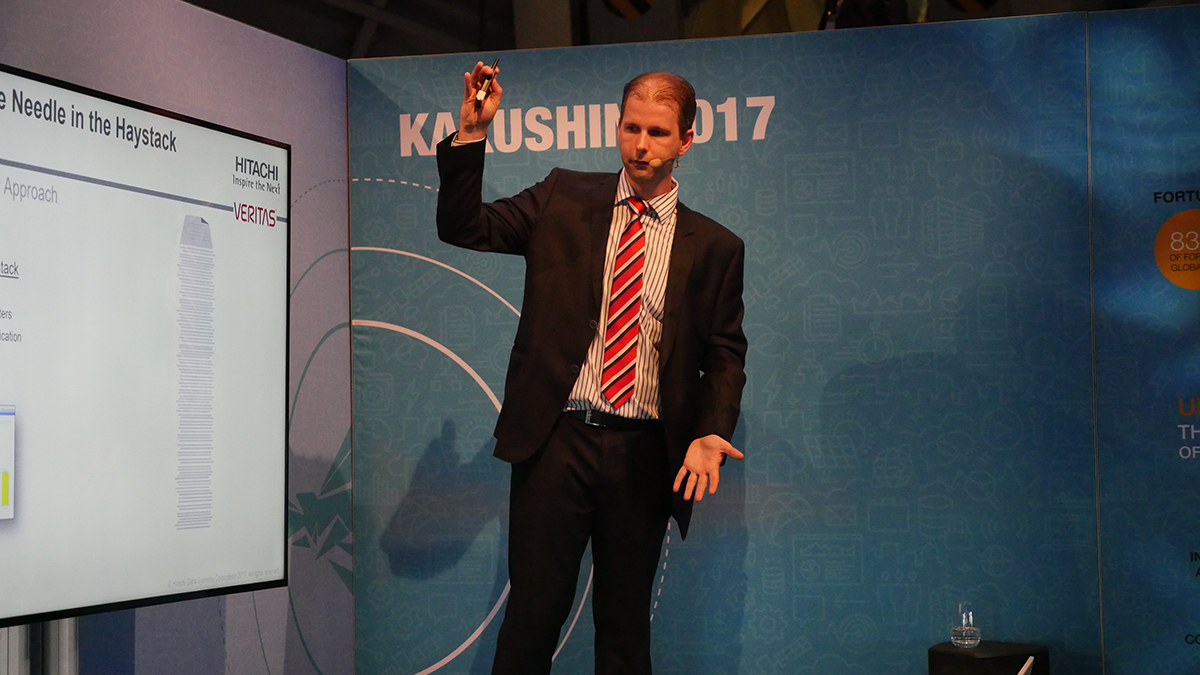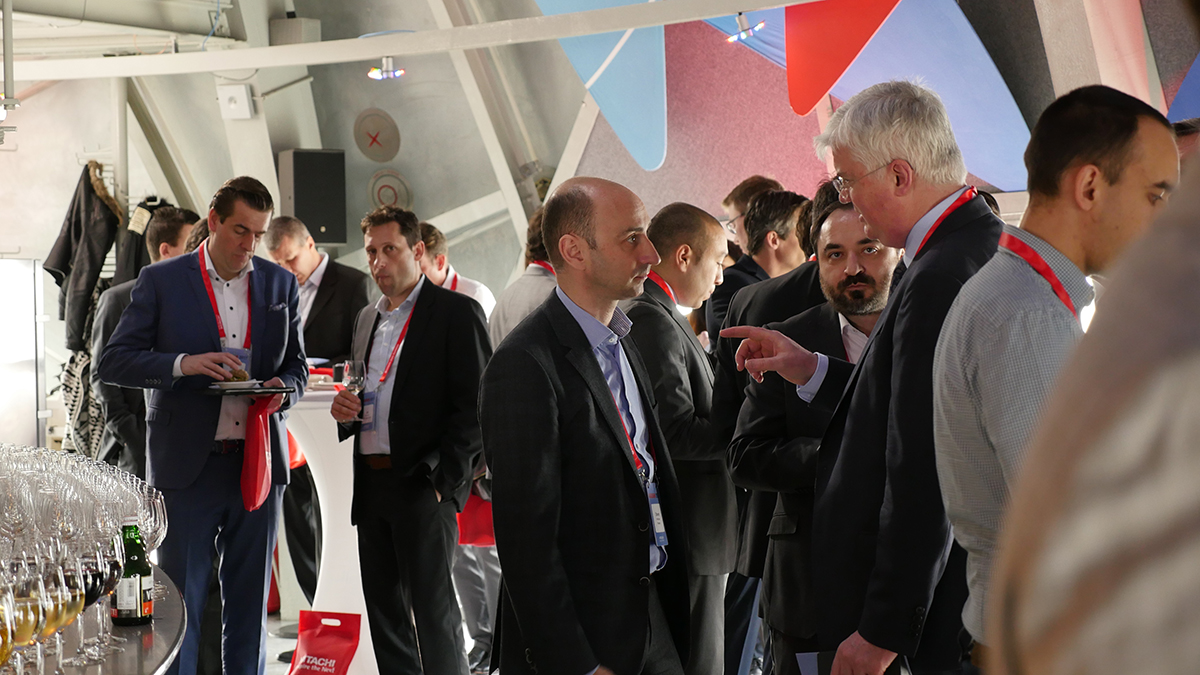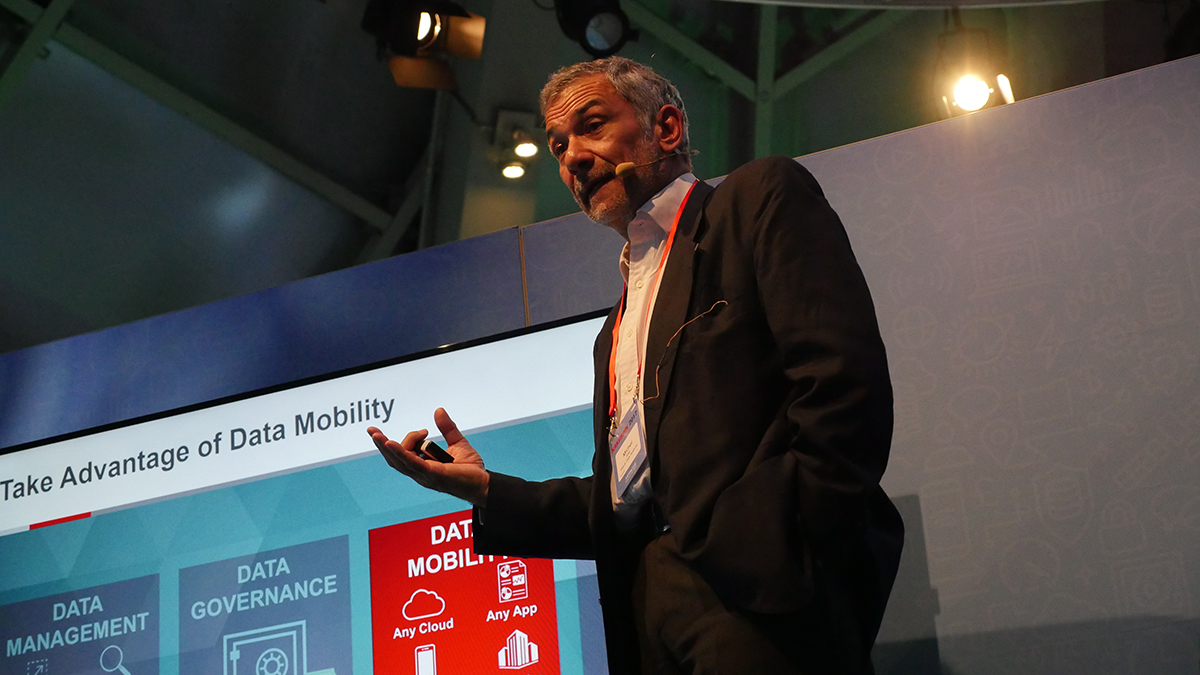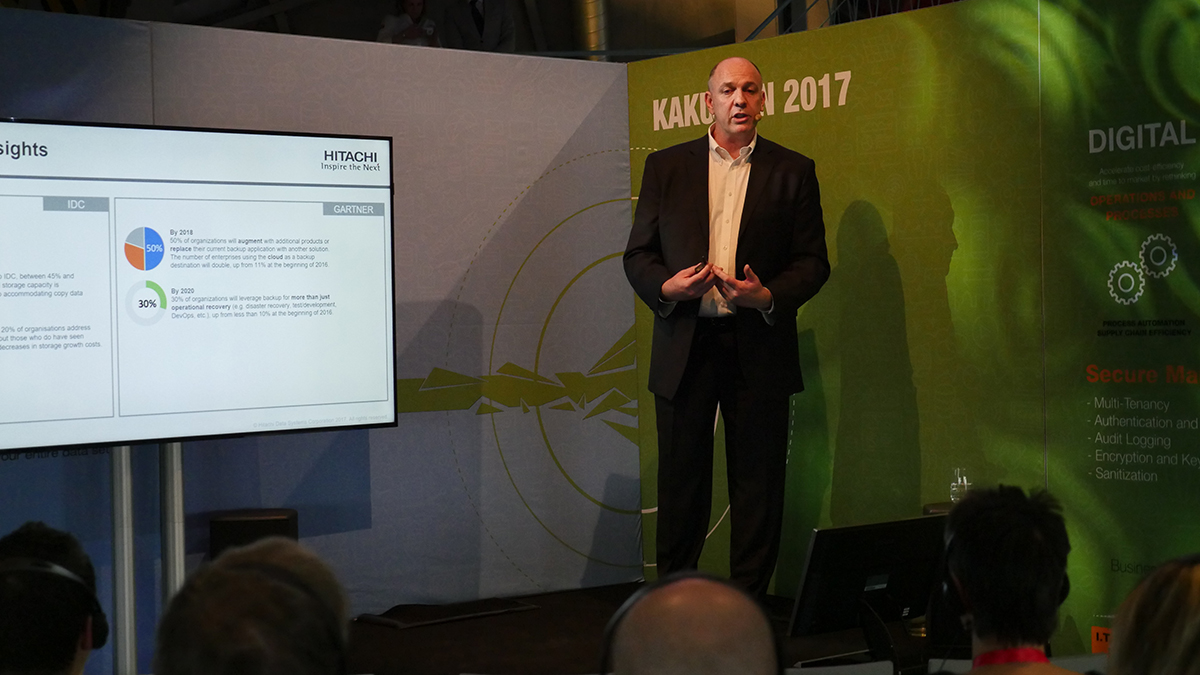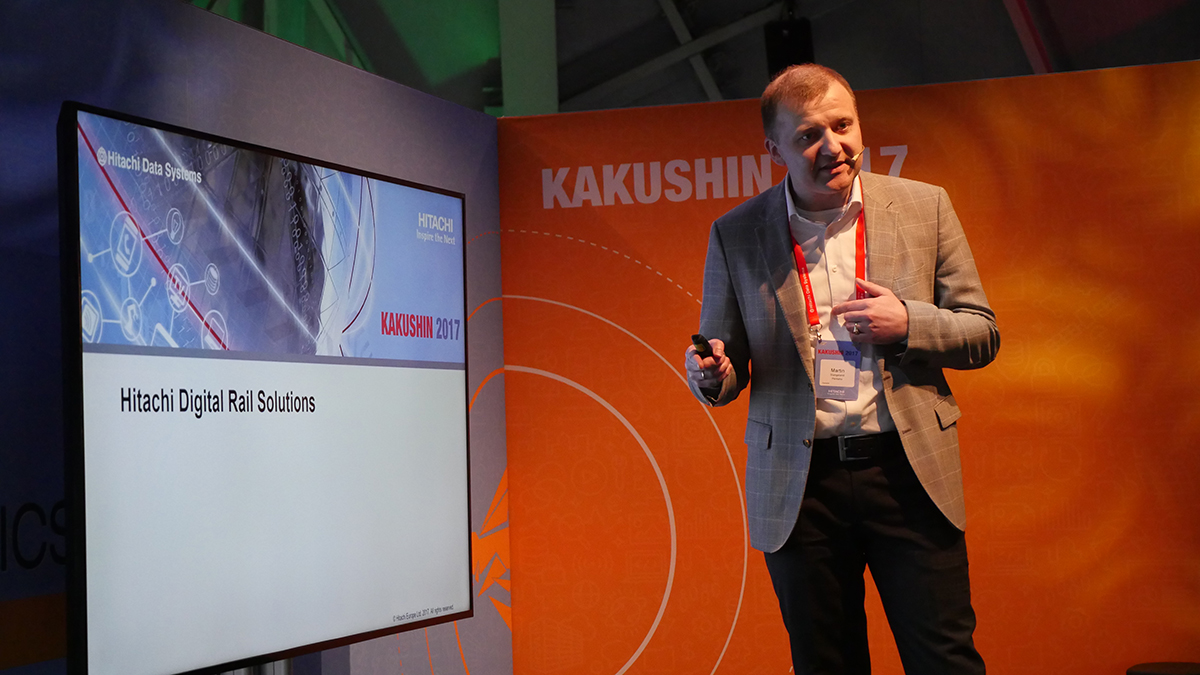TRANSFORMATION & ORGANISATION
Hitachi Data Systems Kakushin event : The first step to your Digital Transformation
The Digital transformation and the impact of IoT were among the hot topics discussed by more than 150 attendees.
March 30, 2017
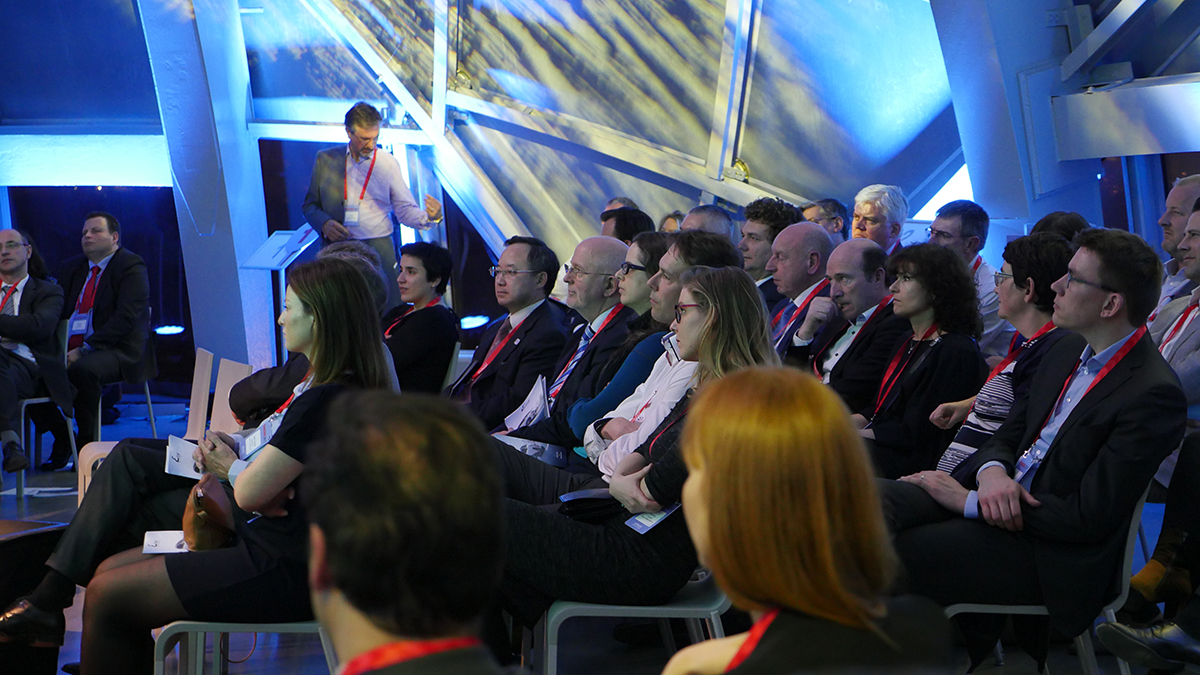
HDS recently invited its Belux customers and partners to reach for the sky. Its annual event Kakushin 2017 (Japanese word for Innovation) did indeed take place in the higher spheres of the Atomium. The Digital transformation and the impact of IoT were among the hot topics discussed by more than 150 attendees. – By Olivier Fabes for ITnation
The Brussels landmark with its nine interconnected spheres was not only chosen by Hitachi Data Systems because of the splendid views it offers. As a vibrant testimony of the Belgian engineering genius of the 50’s, the Atomium is the perfect place to reflect on how innovation and technology are changing our lives and businesses.
Digital transformation was the key topic of Kakushin this year. This transformation is without doubt a long but necessary journey for any enterprise who wants to preserve or extend its brand value in times of disruption. At a time when well established companies are being threatened by agile start-ups. «Six weeks after the Cuban embargo was lifted, Airbnb was already doing business in the island, whereas Marriott still not. Airbnb has an IT department of 5 people, Marriott employs some 1.000 IT specialists, » illustrates Bob Plumridge, CTO of HDS for the EMEA region, in his opening keynote speech.
Disks as good as dead

Bob Plumridge, CTO of HDS for the EMEA region
« Digital transformation is affecting us as much as it is affecting our customers, » he adds. Indeed, Hitachi Data Systems, the IT arm (some 8.000 employees) of the industrial conglomerate Hitachi (more than 330.000 employees worldwide) knows what it is talking about when it comes to digital transformation. «5 years ago, 85% of our revenues came from hardware, mostly storage systems. Today, our hardware revenues make around 50% of the total. Our software, services, IOT and managed services businesses have grown steadily. Our business is diversifying because customers want solutions. The days when customers asked ‘how much storage can you offer me?’ are gone. Storage is just a part of a global solution. Now, the customer asks « I want to deploy SAP Hana, how can you help me? », says Bob Plumridge.
Transformation was a condition for survival for HDS given the profound and fast changes on the storage market: « This market has been declining in terms of revenues and cost per unit, even though the demand for capacity is increasing. » The transition from hard drives to Flash or hybrid solutions has happened much faster than anyone predicted. « We see customers that do no longer buy any spinning disk at all. Flash technology is the future. In less than 6 years, we transitioned from disk to Flash memory. And disks have been with us for more than 60 years. »
Given this pace of change, HDS is quite happy it managed to grow in a declining market. « Clients do still need infrastructure hardware but also data management tools on top of it, in a world where storage requirements are growing. Keeping data for 2 years used to be considered as a long time. Now, the data lifecycle has extended so much. Look at the healthcare sector. Organizations like hospitals want to keep data on their patients during a whole life. And people tend to live much longer. »
Industrialized IT
As a company that existed more than 100 years, Hitachi has seen many transformations in manufacturing, construction, transport, etc. In the digital industrial world, HDS is convinced IOT (Internet of things) is the next big thing. « We see IOT as a key enabler of the industrialized IT we are focusing on. Hitachi has always been very good at operational technology, building trains, scanners, X-ray machines, transportation systems, etc. As the IT arm of the group, we can see how businesses can use the data that these machines produce. For instance, if you can put sensors on a train and see that hydraulic pressure is dropping, you know you have a problem. We help companies anticipate such problems. »
This is where data analytics comes in, HDS having developed a complete software portfolio in recent years, from ‘infrastructure as a service’ tools to data integration and orchestration solutions.
How can this industrial mix of IOT and Big Data be of any interest for the financial sector, in a country like Luxemburg? « In the US, we developed tools used by banks to detect fraudulent trade. We use real time data analytics and monitoring of systems to detect anomalies in patterns. In the insurance world, IoT help measuring driving patterns by individuals. For instance, if a young driver drives only during daytime, the insurance company will offer him a lower premium. Only sensors in the car can measure that. They will be more and more built-in in the car, when leaving the production chain, » predicts Bob Plumridge.
Even though HDS is proud to have succeeded in its transformation from a « storage-only company », it does not throw away its hardware DNA. « You still need a solid infrastructure foundation to build your data analytics layers on. The big challenge now for most companies is that they are collecting data in hundreds of different formats. How do they get something structured from it? This is where we try to help companies in their digital transformation. To sum up, we have been spending the last 30 years storing and protecting data. Now we help organizations to really exploit these data. »
[colored_box color=”blue”]
A specific platform for IoT
18 months ago, Hitachi set up a dedicated group to look at the IoT impact for itself and its customers, based on more than a century of experience in operational technology and more than 50 years of expertise in IT. The result is Lumada, Hitachi’s IoT core platform. The aim of this platform is to accelerate digital transformation by bridging industrial technology (sensors for instance) and information technology (the data analytics part). The first lessons learnt through Lumada are already being tested in several proofs of concepts around the world and in a first « real life » major implementation. The platform is indeed being used to monitor the reliability and punctuality of Crossrail, the new rail system being rolled out in London.
Hitachi experts foresee that a train on this new system, equipped with different sensors, will generate around 2 Petabytes of data per year. 350 trains will be monitored using the Hitachi IoT platform, building up a mountain of 700 Petabytes of data per year … Data analytics tools will be no luxury to get insights into this ocean of data.
[/colored_box]
